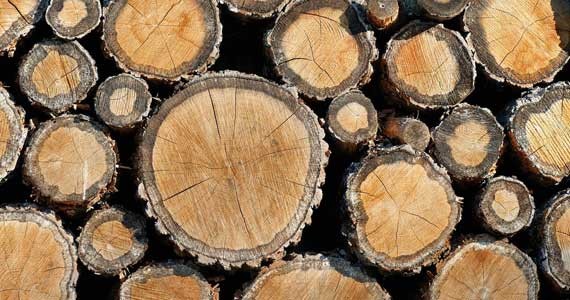Despair. Shock. These were the reactions of workers and residents around Port Hawkesbury when NewPage Corporation announced it was shutting its mill in 2011.
The mayor called an emergency council meeting to save the mill. At any cost. His beloved town's existence was at stake.
About 600 mill jobs were gone, and another 400 in the woods, plus spinoffs in trucking and other industries, and all the tax revenue supporting teachers and doctors, et cetera. A massive economic blow for Cape Breton.
But then premier Darrell Dexter announced, three days after admitting his failure to reach terms with the mill's only remaining potential buyer, that the mill was saved.
Port Hawkesbury rejoiced.
Fifty years (and counting) of concessions
The buyer, a subsidiary of Vancouver-based Stern Partners---an investment company---got a sweet deal. It'll pay lower utility rates. It'll pay off a fraction of NewPage's debts. There are tax breaks. Stern received $124.5 million from the province.
Concessions. Nothing new there. The province has been making concessions to large forestry companies for at least 50 years. When Robert Stanfield was premier, the government signed two leases, in 1961 with Stora Forest Industries Limited and in 1965 with Scott Maritimes Limited. The leases gave access to 46 percent of provincial Crown land, nearly 13 percent of total provincial landmass, to two large forestry companies. The owners of the companies have changed over the years but the purpose, to supply our mills with wood products and create rural jobs, is the same.
Environmentally, every one of that long series of multinational forestry companies has done us wrong. They've clear- cut our public land nearly 100 percent of the time. When local economic conditions no longer suit them, they leave.
The conclusion of the leases should be a golden opportunity to reclaim our forests for local, selective logging and other sustainable, and profitable uses. A more sustainable form of logging is practiced on much of the province's privately owned land, by many of our 30,000 woodlot owners.
But other than literature on sustainable forestry practices, and encouraging him to keep cutting his wood, Tom Miller hasn't felt supported by the government in 38 years as a Pictou County woodlot owner. "These mills are considered too big too fail," he says. "Well, I'm too small to care about."
Environmentalists say a lucrative, high employment forestry industry is possible on Crown land, but it's hard to envision while doing business with multinational corporations whose only interest in Nova Scotia is maximizing shareholder return based on our wood.

These satellite images of the Sheet Harbour area show
ever-enlarging clear cut areas, in beige.
"We understand the government had no choice," says Raymond Plourde, wilderness coordinator with the Ecology Action Centre. "We're not saying it should have just let that mill die." But, he says, it failed to stand up to Stern on key environmental conditions.
The draft agreement government proposed, which was rejected by Stern, required that its operations be certified by the Forestry Stewardship Council, the gold standard in sustainable wood cutting. The final agreement allows Stern to get its certification from an industry version instead, one with a history of certifying forests turned barren as "sustainable." The draft agreement also set aside 90,000 hectares as a potential protected area, but the final agreement allows Stern to acquire and log that area as needed.
It's déjà vu all over again, with government keeping the mills going by any means necessary.
Consult, then ignore
The first of the 50-year leases has expired, replaced with a "forestry utilization licensing agreement" with Stern. Minister of Natural Resources Charlie Parker says in three years a similar agreement will be negotiated with Northern Pulp, the current owner of the Boat Harbour paper mill in Pictou County.
The licensing agreement gives the province more control over how the land is used. "The initiatives within our natural resources strategy have to be followed," Parker says.
That natural resources strategy was launched in 2011, after 27 community meetings with 2,000 attendees across the province, and 600 written submissions from forestry companies, environmental groups and woodlot owners. The resulting 10-year plan talks of transparency, consultation and biodiversity, a dramatic departure from pro-clear cut language of the past. It made good on promises from Parker's predecessor, John MacDonell, to significantly reduce clear cutting.
But environmentalists expressed immense disappointment a year later, when the province finally released a definition clarifying what it meant by "clear cut." Its definition is: "a forest harvest where less than 60 percent of the area is sufficiently occupied with trees taller than 1.3 meters." Companies must leave four-foot trees on 60 percent of the areas they cut, half the time.
Jamie Simpson, author of Restoring the Acadian Forest: a guide to forest stewardship for woodlot owners in the Maritimes, says the clear cut definition serves only to make the province look like it is doing something. "Half of all cutting can leave a moonscape and the other half can leave a scattering of low-quality trees," he says. Even a complete clear cut under the new definition is okay if 30-centimetre seedlings of certain species are left behind on 60 percent of the cut. That's called a "restorative cut."
And more than two years after the NDP promised to ban whole-tree harvesting---an especially destructive form of clear cutting that leaves nothing to fertilize the soil for re-growth---there is still no ban. Parker says it's next on the agenda and will follow a similar consultation process as was done for the clear cut definition. The same process that took environmentalists on a ride of hope and disappointment.
No more wood
Satellite pictures collected by the Ecology Action Centre show a steady decline in forest cover on Crown land over three decades, as companies scramble farther afield for wood. Finding enough wood to meet the lease obligations was always a concern. This is particularly true of the Northern Pulp/Boat Harbour Mill lease (see the photos at thecoast.ca).
"People at the department tell me it's a chain around their neck, because it's volume-based," says Matt Miller. He's the forestry coordinator at EAC, and also Tom Miller's son. "Volume-based" means beyond the access to 93,000 hectares, the province guarantees 100,000 tonnes of wood annually to Northern Pulp, whether it's available in the area or not.
For wildlife, this is devastating. "A lot of animals rely on old-growth habitat that barely exists anymore. There's no where for them to go so they just die off," Plourde says. The World Wildlife Fund rates our Acadian forest as one of the world's most endangered, with a minuscule fraction of old growth remaining.
The great irony is, pulp and paper never made much economic sense in Nova Scotia in the first place, and the situation is worsening. Northeastern North America is one of the most expensive places to produce pulp and paper. Lower labour costs and environmental standards and faster growth rates in the southern hemisphere mean most paper is bought from Asia and South America. With e-technology, global demand for paper products is down.
Add the high cost of fuel and it's a perfect storm of unsustainable economics and an industry contributing little to GDP, affixed to the government teat and shouldering none of the risk of failure. This kind of forestry just doesn't work without government subsidies.
Second chance
As 2012 closed, the province bought 220,000 hectares in southwestern Nova Scotia from Resolute Forest Products Inc., after the company shut down its Queens County mill. "The hope is for better practices than we've seen where we've been so tied up with our commitments to the mills," Plourde says. "Or it will be a last grab for the dominant players in the industry."
The greatest potential lies in forests managed by community groups for recreation, tourism, selective logging and as protected areas. "The NDP has wisely put a mechanism in place for community forests," he says. "But there is no doubt that the remaining big companies are hungrily eyeing this land and lobbying for access."
In fact, a bid is in progress from a consortium of mills, contractors and ex-foresters with a history of clear cutting. They rely on industrial-scale machinery, making sustainable cutting impossible.
Plourde sees warning signs the government will go the wrong way with this land, particularly because it expects $4 million in annual stumpage fees. "It bought the mill to avoid an environmental remediation cost and it has plans for a biofuel facility, part of a growing focus on using the forest as energy, which only increases the consumptive pressure on it."
To establish a lucrative, sustainable forest industry we must stop subsidizing multinationals and instead support woodlot owners and true community forests, with a focus on sustainably-harvested, high-value products like hardwood lumber, Christmas trees, firewood and even under-researched non-wood products, like wild mushrooms. These provide far more jobs per dollar invested.
As Matt Miller puts it: "Change forest management to focus on restoration, bringing it back to a more natural state, and stop bending science to short-term profitability. Get away from one-industry towns."
Chris Benjamin is a freelance journalist and author in Halifax. This piece is based in part on his recent radio documentary for CBC's Maritime Magazine.

